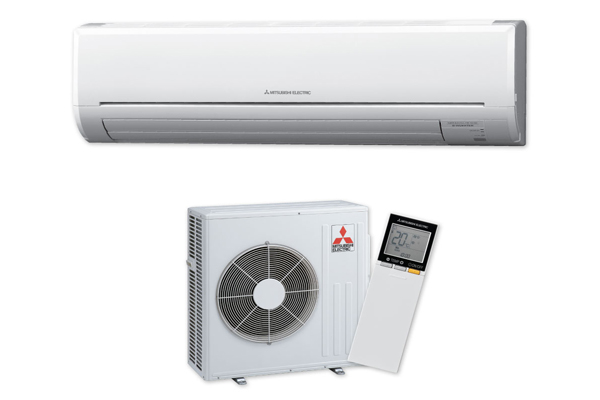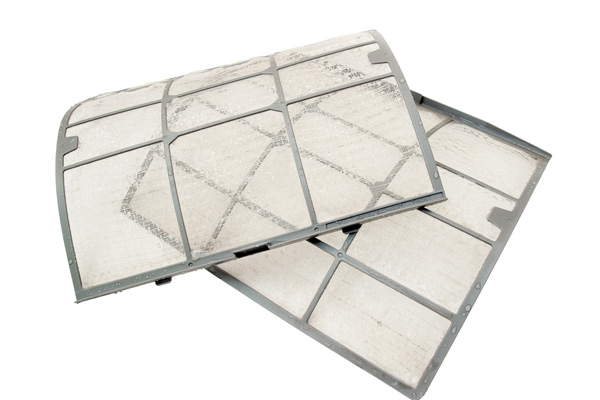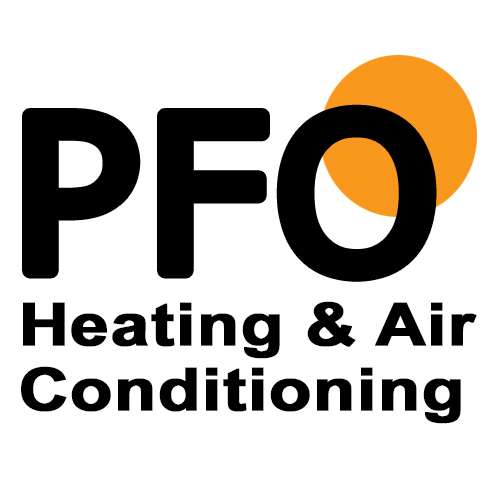
All mini-split systems have two major parts – outdoor units and ductless indoor air handlers. Mini-splits are capable of circulating warm and cool air, depending on the needs of the homeowner. As long as the mini-split is the correct size, you and your family will enjoy optimum comfort regardless of the season.
The indoor air handler contributes to the overall efficiency of the system. If your air handler is efficient, there is less burden on the outdoor unit. As such, the unit will not be as susceptible to wear-and-tear and will last longer.
Understanding The Ductless Air Handler
The indoor component of the HVAC system is the air handler. It is the part of the system that helps distribute the air indoors. Conditioned air is pushed through the air handler and released into the rooms or indoor spaces. The indoor air handler of central HVAC systems is usually installed in the attic, basement, or a closet specifically intended for this purpose. Ductless mini-split air handlers, on the other hand, can be mounted on a wall, ceiling, or floor.
How Do Mini-Split Air Handlers Work?
Air is cooled using a compound known as the refrigerant. It is pushed from the air handler and through the outdoor unit. In most homes, the outdoor unit is installed in the backyard or side yard so that the heat released through the unit can be dispersed without causing discomfort. When the refrigerant has cooled down, it then returns to the indoor unit through the copper coils. The fan blows on the coils, filled with refrigerant, and releases cool air indoors. The cycle is reversed when it is in the heating mode.

What Components Make Up The Indoor Air Handler?
The role of the indoor air handler is to regulate and circulate indoor air temperature. It has several components, each of which functions to deliver enhanced home comfort in your home. These components include:
Evaporator Coils
The indoor evaporator coil plays an important role in the refrigeration cycle of the HVAC system. In summer, when cool air is required, the coil remains cold. At a low temperature, the coil removes humidity. The air that passes over the coil is then cooled down. This is the cool air that is released through the indoor unit and into the rooms.
In winter, when warmth is required, the coil is hot. When air passes over the coil, it heats up. As a result, the air that passes through the indoor air handler is warm.
Blower Motor
The blower motor circulates air in the home. It comes in three speeds: single, multi, and variable.
- Single-Speed: This type of blower motor runs at a single fixed speed. It cycles on and cycles off, depending on the thermostat setting. When it is on, it runs at 100% capacity. When it is off, it runs at zero capacity. There is no in-between.
- Multi-Speed: Multi-speed motors can run at different speeds, depending on the specific needs of the household. For example, the blower motor can operate at full 100% capacity if the thermostat or control system is set a high demand. It can also run at a slower speed for low-demand situations. Since the speed of the blower motor is reduced, low humidity levels can be maintained. This allows the system to produce consistent indoor temperature and increasing home comfort. A multi-speed motor also has a higher energy efficiency than a single-speed unit.
- Variable-Speed: A variable speed motor can adjust its speed to match indoor comfort requirements. Air handlers with variable speed can control how the heated or cooled air is circulated in your home. The motor can adjust its speed depending on its capacity. With a variable speed motor, the system can increase or decrease the amount of heating or cooling indoors as required. With this capability, variable-speed motors can provide better comfort, increased efficiency, and quiet operation. You get to enjoy excellent comfort at a reduced cost.
Vibration Isolators
When blowers are turned on, they vibrate, and this vibration produces noise. The level of noise varies, but it can be a source of annoyance for household members. With vibration isolators, the noise can be significantly reduced. Vibration isolators are usually made using thick rubber, which helps in dampening the noise and eliminating the vibration. As such, the sound cannot be transferred to the structures. The isolators may have a mounting bracket or a section that is installed between the fan and the body of the air handler.

Ductless Air Filter
HVAC systems usually have built-in air filters. Filters collect dust, dirt, allergens, and other particulates that contaminate the air. That way, when air is released into the rooms, it is clean and safe to breathe. Air filters help reduce the risk of respiratory illnesses and allergies.
In window air conditioners, the filters are usually the most basic that trap larger contaminants like pet fur. In central and ductless systems, however, filters can trap very tiny particles. Some ductless models may even have multi-stage filtration that allows you to enjoy the cleanest and healthiest air indoors.
Controls And Thermostat
All HVAC systems must have controls to allow you to regulate and control settings. With control settings, you can manipulate supply air temperature, humidity, airflow rate, and air quality, among others. Some units offer basic control that switches the system on and off. They may also have additional features that allow you to automate the whole house. Automatic centralized control allows you to manage your heating and cooling system completely.
Drain Pipe
When your HVAC equipment is in the cooling cycle, the temperature in the system is very low. The cold turns the surrounding air into water droplets, which accumulate on the cooling coil. As the water droplets gather and become heavier, they fall from the coil and collect into a drain pan and funneled through the drain line. This process helps eliminate fluid and keep the indoor air handler dry. From the drain line, the water is disposed of through the outdoor unit.
Louvers
The louver or fin is the component through which conditioned air passes before it is released in the room. Louvers can be manipulated to change the direction of airflow so it can cool or heat whichever area of the room is desired. Louvers are either vertical or horizontal.
Vertical louvers control the flow of air from left to right. If you want to direct the flow of air in a certain direction, simply change the position of the louvers manually. Horizontal louvers, on the other hand, control the direction of airflow up and down. The louvers are controlled by a small motor that may be controlled in turn by remote control. The louver can be fixed in one position, or it can be set in rotation mode. In the latter mode, the indoor air handler distributes air evenly.
Other Ductless Air Handler Accessories
Indoor air handlers often work better when accessories are added. Accessories enhance the function of the indoor air handler and allow it to function at its highest capacity. One of the most common accessories is the electric heater. When added to the air handling unit, it supplements the heating capabilities of the condenser. The electric heater heats the coils, warming the conditioned air as it passes over.
Another popular accessory is ultraviolet lighting. UV light helps neutralize airborne bacteria and viruses. With UV lighting, the indoor air handler has enhanced the capability of purifying the air indoors, ensuring clean and healthy air. There are also other accessories that you might consider, such as air filter boxes and cutout switch for water safety.
Ductless Heat Pump Repairs And Replacements
Low to zero airflow could be a sign of a faulty air handler, which in turn might be a sign of a burnt-out blower motor. Should this happen, the only solution is to have the blower motor replaced. Check if your indoor air handler is an older model as well. Aging is a cause of failure in indoor air handlers. If your unit fails, it might have to be replaced.
Always watch out for early signs of a faulty or broken air handler. Unusual noises such as rattling or clanging indicate a problem with a damaged blower fan or a loose air handler. There are certain reasons why an indoor air handler fails and a problem could occur when you least expect it. If it starts to show issues and is not working properly, call your trusted HVAC technician to inspect it. They will likely fix the unit or replace it.
Maintaining Your Ductless Air Handler
The air handler impacts your home’s air quality and energy efficiency. If you want it to last longer and remain operational, make sure that it undergoes regular care and maintenance. Check that the air handler is always clean. Dirty air handlers distribute and circulate unhealthy, contaminated air. Dirt in the unit also lowers its efficiency. Sooner or later, you will find yourself paying a higher bill for energy costs.
Make sure to change your air filter regularly. Once a month, check the filter to determine if it needs replacement. It is also a good idea to supplement the function of your air handler by using accessories that clean and improve indoor air. A UV germicidal light, for example, helps kill harmful microorganisms in the air. It also prevents the growth of mold and bacteria in the air handler. Lastly, make sure that your HVAC system receives an annual checkup and tune-up by a licensed HVAC technician.
Check Out One Of Our Ductless Installation Projects
Mitsubishi Ductless Installation Project In Rocky Hill, New Jersey
Conclusion
If you are having an air handler installed, make sure to talk to a professional HVAC technician. HVAC professionals are experts in their field, and they can ensure that you have the right model, size, and capacity so you can enjoy proper and reliable air conditioning throughout the year.
Call PFO Heating & Air Conditioning To Learn More About Ductless HVAC Systems

For all your HVAC system needs, call PFO Heating & Air Conditioning today. Our technicians are all NATE-certified, and they have a great deal of experience. They’ll also determine what your home comfort needs are and find the best and most affordable solutions to meet them.
As a full-service HVAC company, PFO Heating & Air Conditioning offers an array of HVAC services. This includes heating and cooling installations, tuneups, repairs, and much more. We offer free, in-home consultations. Call now to schedule an appointment.
Click here to contact us now or call us at (800) 253-9001 to find out more!
The post Ductless Indoor Air Handlers: A Comprehensive Guide appeared first on PFO Heating & Air Conditioning.
from PFO Heating & Air Conditioning https://www.princetonfuel.com/blog/ductless-indoor-air-handlers/
via IFTTT
No comments:
Post a Comment